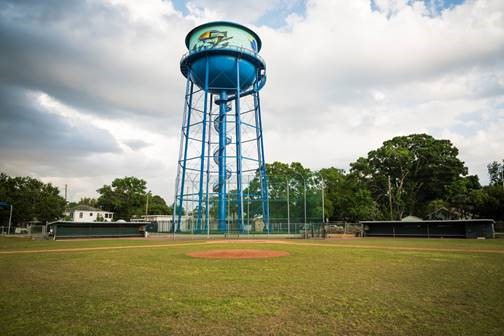
For Immediate Release
Wednesday, October 2, 2019
Contact: Sarah Revell
850-245-6522
[email protected]
Secretary Lee Announces the Designation of Huggins-Stengel Field on the National Register of Historic Places
Tallahassee –
Secretary of State Laurel M. Lee announced today that Huggins-Stengel Field in St. Petersburg has been listed on the National Park Service’s National Register of Historic Places.
“I am pleased that Huggins Stengel Field has been designated on the National Register of Historic Places,” said Secretary Lee. “Major League Baseball spring training has long been an indelible part of Florida’s culture and few sites are as intricately linked to spring training as Huggins-Stengel Field.”

Huggins-Stengel Field, located in St. Petersburg, served as the Major League Baseball spring training grounds for the New York Yankees (1925-1941, 1946-1950, 1952-1961), New York Giants (1951), New York Mets (1962-1987) and the Baltimore Orioles (1992-1995). A total of 17 New York Yankees World Series winning teams played at Huggins-Stengel Field in addition to the 1969 and 1986 New York Mets championship teams. Initially named Crescent Park Field, the name was changed to Huggins-Stengel Field in 1962 in honor of renowned Yankees team managers Miller Huggins and Casey Stengel.
Custom built for Babe Ruth, the field hosted the Yankees at the height of what many consider to be the greatest dynasty in major professional sports. Starting with the St. Louis Browns in 1914, Major League Baseball spring training was a significant tourist draw for the city of St. Petersburg. It was the arrival of the Yankees at what is now Huggins-Stengel Field in 1925 that made the city renowned as a spring training site. Some of the greatest baseball teams, including the 1927, 1939, 1953 and 1961 Yankees and the 1969 Mets, played at Huggins-Stengel Field.
The field has also seen some major moments in baseball history, including the 1936 debut of Joe DiMaggio as a Yankee. During spring training in 1939, Lou Gehrig first started showing signs of ALS, the disease that ended his career and took his life. During its long history, the field hosted legendary baseball players such as Ruth, Gehrig, DiMaggio, Yogi Berra, Mickey Mantle, Willie Mays, Tom Seaver, Nolan Ryan and Cal Ripken, Jr. among many others. The New York Mets formed in 1962 and held their first spring training at Huggins-Stengel Field under the guidance of former Yankees manager Casey Stengel. After the Orioles left in 1995, it marked the end of an era for the field.
Huggins-Stengel Field is now part of Crescent Lake Park and is still used by local baseball leagues. The park is managed by the City of St. Petersburg and was designated as a local historic landmark by the city in 2018.
###
About The National Register of Historic Places
The National Register of Historic Places is a list maintained by the National Park Service which includes historical or archaeological properties including buildings, structures, sites, objects, and districts, that are considered worthy of preservation because of their local, statewide and/or national significance. Nominations for properties in Florida are submitted to the National Park Service through the Florida Department of State’s Division of Historical Resources. Florida has over 1,700 listings on the National Register, including 295 historic districts and 175 archaeological sites. There are more than 50,000 sites contributing to the National Register in Florida. For more information, visit flheritage.com/preservation/national-register. For more information about the National Register of Historic Places program administered by the National Park Service, visit nps.gov/nr.
About The Florida Department of State’s Bureau of Historic Preservation The Bureau of Historic Preservation (BHP) conducts historic preservation programs aimed at identifying, evaluating, preserving and interpreting the historic and cultural resources of the state. The Bureau manages the Florida Main Street Program, and under federal and state laws, oversees the National Register of Historic Places program for Florida, maintains an inventory of the state's historical resources in the Florida Master Site File, assists applicants in federal tax benefit and local government ad valorem tax relief programs for historic buildings, and reviews the impact that development projects may have on significant historic resources. For more information, visit flheritage.com/preservation.
